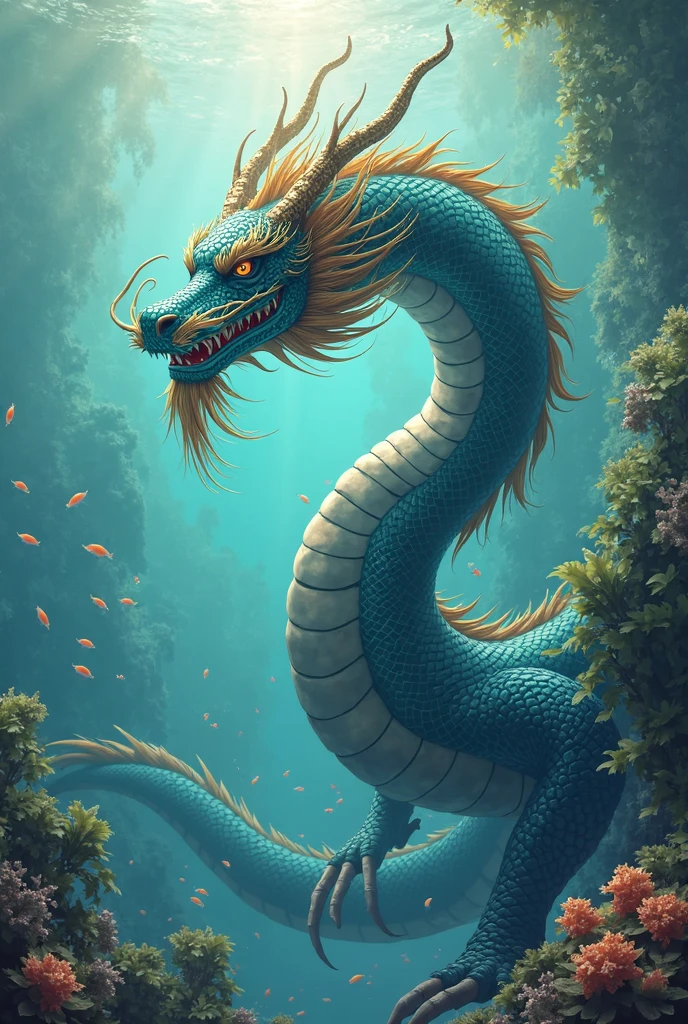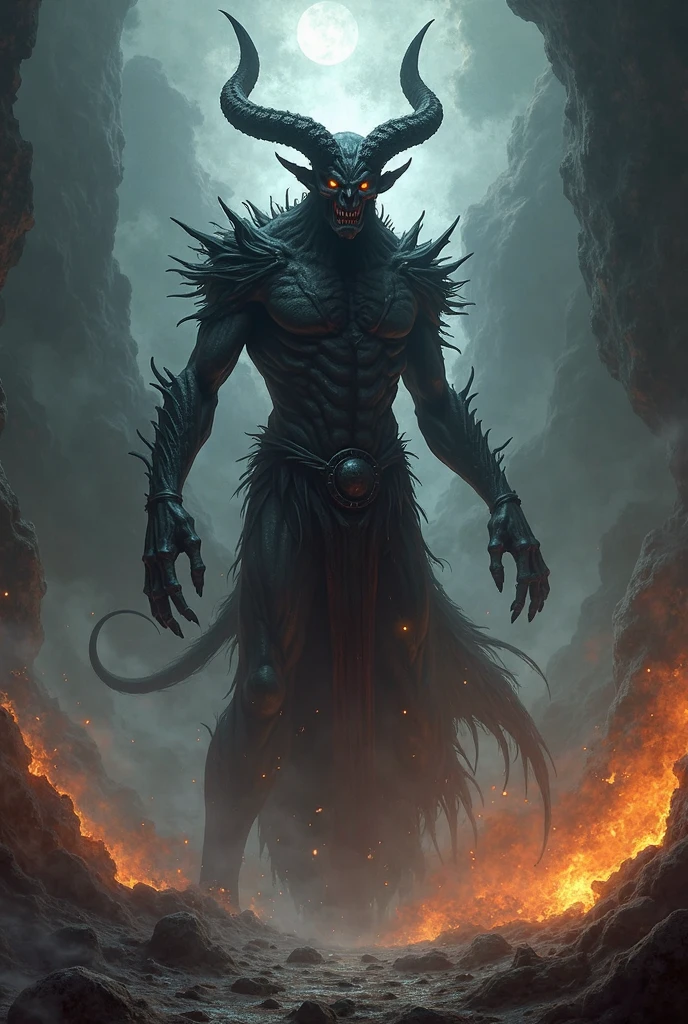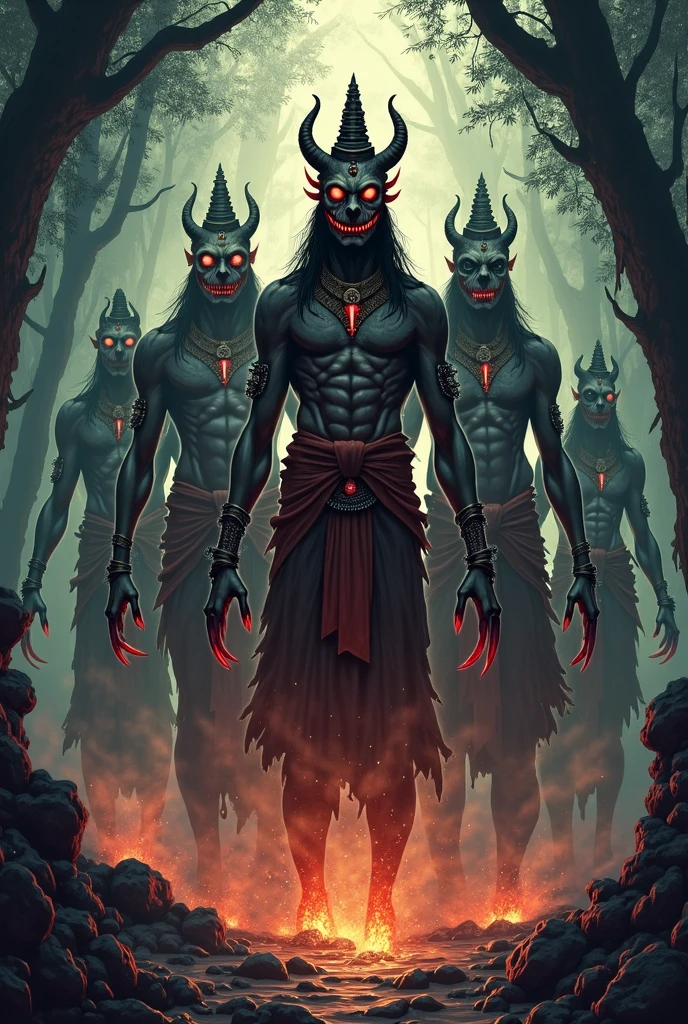Origins and Historical Evolution of a Mythic Figure
The Bronze-Horned Warrior King
Let me take you back to the fog-shrouded dawn of Chinese civilization, around 2500 BCE. This is where we first encounter the formidable figure of Chiyou – a being who straddles the line between history and myth like few others. As tribal leader of the Nine Li clans in the Yellow River valley, Chiyou wasn’t just another warlord. He commanded territories in what we now call Hebei and Shanxi provinces, ruling over a confederation of 81 tribes according to ancient bamboo annals. What made him truly revolutionary? His mastery of bronze metallurgy. While the Yellow Emperor’s people were crafting stone tools, Chiyou’s smiths were forging the first bronze weapons in East Asia – swords that could cleave through leather armor, spears that never shattered, and dagger-axes with terrifying reach.
Now, the physical descriptions of Chiyou are where things get fascinating. Primary sources like the Shan Hai Jing describe him as having “a bronze forehead and iron cranium” with four piercing eyes that could see in all directions. Some accounts give him six arms, each wielding a different weapon, while others describe bull’s horns growing from his temples. Modern scholars debate whether this represented actual ritual armor or if it’s symbolic of his supernatural nature. What’s clear is that his very appearance was weaponized psychological warfare. When this bronze-skinned giant with metallic horns led his troops into battle, you’d better believe it struck fear into opponents’ hearts.
The Powder Keg at Zhuolu
The stage was set for conflict when Chiyou’s expansion ambitions collided with Emperor Yan’s territories. After defeating Yan, the real confrontation began when the legendary Yellow Emperor (Huangdi) joined the fray. This wasn’t just a border skirmish – it was the Battle of Zhuolu, the mythological equivalent of World War Zero. For ten brutal years, these forces clashed across the North China Plain in what became the most famous conflict of the Three Sovereigns era.
Chiyou wasn’t just a tactician; he was a meteorological manipulator. Historical texts record how he summoned impenetrable fog that blanketed the battlefield for three days straight, disorienting Huangdi’s troops. But the Yellow Emperor countered with two secret weapons: the south-pointing chariot (an ancient compass device) and the drought goddess Nüba who evaporated Chiyou’s storms. The climax came when Chiyou’s metallic horns got stuck in a tree during retreat – a vulnerability Huangdi exploited to finally capture his nemesis.
The aftermath was gruesome even by ancient standards. After execution, legends claim Chiyou’s blood turned the earth crimson for miles around. His decapitated head became a war trophy that allegedly terrorized Huangdi’s camp until proper burial rites were performed. Multiple provinces still claim to host his burial mound – a geographical testament to his larger-than-life presence.
A Contested Legacy: Demon or Cultural Hero?
Here’s where Chiyou’s story gets really interesting. Depending on who you asked in ancient China, he was either a demonic villain or a folk hero. In orthodox histories written by the victors, he became the archetypal Chinese demon – patron of rebels and symbol of chaos. The Zhou Dynasty used his image as a cautionary tale against insurrection, while Daoist priests invoked his name in exorcism rituals for centuries.
But travel south to Yangtze River territories, and you’d hear a different story. Among the Miao and Hmong peoples, Chiyou is revered as Txiv Yawg – their ancestral king and culture hero. Their oral traditions tell how he taught metalworking, established laws, and protected them from northern aggression. In Hunan province, you can still find villagers performing the “Chiyou Dance” during harvest festivals, wearing horned masks that would’ve terrified their Han neighbors.
This cultural schizophrenia extended to imperial courts too. Qin Shi Huang secretly worshipped Chiyou before his unification campaigns, while Han Emperor Gaozu performed sacrifices at Chiyou shrines before critical battles. Even today, Taiwanese military academies study the Battle of Zhuolu for its strategic lessons – proof that this 4,500-year-old conflict still echoes in modern Chinese military history.
Archaeology Meets Mythology
As a historian, what fascinates me most is how archaeology keeps validating elements of the Chiyou legend. We’ve uncovered bronze ritual vessels from the Shang Dynasty (1600 BCE) depicting horned deities bearing weapons – clear parallels to Chiyou’s descriptions. At the Shimao Neolithic site in Shaanxi, they found stone carvings of anthropomorphic figures with bull horns dating to 2000 BCE – right in Chiyou’s supposed timeframe.
Genetic studies of the Miao people show distinct markers separating them from northern Han populations, supporting their claim as descendants of Chiyou’s original tribes. Most compelling? The discovery of advanced bronze workshops in the Yellow River valley dating to 2600 BCE – exactly when and where Chiyou’s metallurgical revolution was said to have occurred. Each shovel of earth turned in China’s heartland seems to blur the line between Chiyou the myth and Chiyou the historical warlord.
Curiosities: Echoes of a Fractured God
- Metallic Ancestry: Some Miao clans still avoid eating beef, believing cows are sacred descendants of Chiyou’s horned visage.
- Blood-Rain Phenomenon: Historical records from 32 BCE describe “blood rain” in Shandong – immediately interpreted by locals as Chiyou’s restless spirit.
- Maple Leaf Connection: Daoist texts claim Chiyou’s execution shackles transformed into autumn maple trees – explaining why their leaves turn blood-red.
- Modern Warfare Symbol: During the Second Sino-Japanese War, Chinese guerilla fighters invoked Chiyou’s name as patron of asymmetric warfare.
- Salt Lake Mystery: The crimson hue of Shanxi’s Yuncheng Salt Lake was attributed to Chiyou’s blood until 18th-century chemists identified algae as the true culprit.
Cosmology, Cultural Impact, and Artistic Legacy
Chiyou’s Place in Chinese Cosmology
In the complex tapestry of Chinese mythological cosmology, Chiyou occupies a unique liminal space. Unlike purely divine beings like the Jade Emperor or malevolent Chinese demons like Zhong Kui, Chiyou straddles multiple realms. Daoist texts position him as the God of Weapons and patron of metallurgy, while simultaneously serving as the archetypal rebel challenging cosmic order. His dual nature reflects ancient China’s concept of yin-yang balance – he represented necessary chaos that tested and ultimately strengthened celestial harmony.
During the Han Dynasty, Chiyou became incorporated into the Five Directions cosmology as the Guardian of the Center, though this position was later reassigned to the Yellow Emperor. Folk traditions in Shandong province still depict him as the Controller of Battlefield Winds, with local farmers making offerings before military conscription. This cosmological ambiguity explains why some Ming-era temples simultaneously enshrine him as a war deity while featuring his defeated image on door guardians to ward off evil.
The Divine and Mortal Relationships
Chiyou’s relationships reveal much about ancient tribal politics:
With the Yellow Emperor (Huangdi)
Their rivalry transcended mere territorial dispute – it embodied the clash between emerging agrarian states and nomadic warrior cultures. Later Confucian scholars reframed their conflict as the struggle between civilization versus barbarism, though archaeological evidence suggests Chiyou’s Jiuli confederation had sophisticated bronze casting and irrigation systems. Posthumously, Huangdi adopted Chiyou’s military innovations, creating an ironic interdependence between victor and vanquished.
With the Flame Emperor (Yan Di)
As blood relatives through the Jiang clan, their conflict carried elements of dynastic feud. Some Warring States texts suggest Yan Di initially supported Chiyou against Huangdi before switching allegiances – a betrayal that fueled Chiyou’s legendary wrath. This triangular power struggle formed the core of China’s foundational mythology.
With Other Mythological Beings
Chiyou commanded supernatural allies that reveal ancient tribal totems:
- Wind Gods (Feng Bo): Chiyou’s meteorological controllers
- Rain Master (Yu Shi): A buffalo-headed deity who flooded battlefields
- Metal Demons (Jin Gui): Animated bronze constructs from his forges
His most fascinating relationship was with the drought goddess Nüba – their elemental opposition (flood vs drought) became a template for later dualistic philosophies.
Historical Influence Through Dynasties
Chiyou’s legacy evolved dramatically across China’s imperial history:
Zhou Dynasty (1046–256 BCE)
Officially demonized as the embodiment of rebellion, his image appeared on ritual bronze vessels as the Taotie – a gluttonous monster warning against excess. Yet military treatises secretly studied his tactics, and the “Chiyou’s Banner” became a euphemism for unconventional warfare.
Qin Dynasty (221–206 BCE)
Qin Shi Huang co-opted Chiyou’s symbolism, casting himself as the new “punisher of rebels” while adopting his military innovations. The Terracotta Army’s bronze weapons directly referenced Chiyou’s metallurgical legacy.
Han Dynasty (206 BCE–220 CE)
A dramatic rehabilitation occurred when Emperor Gaozu performed imperial sacrifices at Chiyou shrines before critical battles. The Fengshan Sacrificial Rituals formally recognized him as the God of War, setting precedent for Guan Yu’s later deification.
Tang to Qing Dynasties (618–1912 CE)
Chiyou became a folk deity among southern ethnic groups and marginalized communities. During the Song Dynasty, his image appeared on Daoist talismans for protection, while Ming-era rebels invoked his name against Mongol rulers. The Manchu Qing emperors suppressed his worship, fearing its revolutionary connotations.
Artistic Representations Through History
Chiyou’s visual evolution mirrors changing cultural attitudes:
Bronze Age to Han Dynasty
Early depictions on ritual vessels showed abstracted horns and weapons. The famous Wu Liang Shrine carvings (151 CE) present him with bull head, wings, and bird feet – symbolizing his connection to earth, sky, and underworld.
Tang Dynasty Buddhist Adaptations
As Buddhism spread, Chiyou was syncretized with Vajrapāni and Yaksha demons. Dunhuang cave paintings show him with multiple arms holding vajras, reflecting this cultural blending.
Song Dynasty Landscape
Scholar-painters like Li Gonglin depicted Zhuolu battlefield scenes with poetic melancholy. Chiyou appeared as a tragic figure – his metallic horns gleaming amidst stormy mountains, embodying the sublime terror of nature.
Modern Reinterpretations
Contemporary artists engage with Chiyou in provocative ways:
- Zhang Xiaogang’s oil paintings frame him as a psychological archetype
- Hmong textile artists weave his stories into story cloths as cultural preservation
- Video games like Wo Long: Fallen Dynasty reimagine him as a final boss with biomechanical horns
Chiyou’s Global Mythological Parallels
As a historian, I’m struck by Chiyou’s cross-cultural resonances:
- His metallic skin echoes the Greek Talos and Hindu Kali
- The 81 brothers motif parallels Norse Heimdallr‘s nine mothers
- His weather control resembles Slavic Perun‘s storm mastery
- The posthumous body transformation mirrors Aztec Coyolxāuhqui‘s lunar dismemberment
This universality suggests Chiyou represents a primordial cultural memory of technological disruption – the moment bronze weapons revolutionized warfare and social structures.
Curiosities: Cultural Afterlife
- Operatic Resurrection: Peking Opera’s Battle of Zhuolu features Chiyou with glowing LED horns since 2012.
- Military Tech Namesake: China’s advanced Chiyou-1 combat drone pays homage to his surveillance prowess.
- Culinary Legacy: “Chiyou’s Horns” are chili-flaked ox tendons served in Sichuan victory banquets.
- Neo-Confucian Revisionism: 18th-century scholars reclassified him as Huangdi’s “wayward son” to resolve moral ambiguities.
- Fashion Symbolism: Shanghai designers use Chiyou-inspired horned headdresses to represent cultural resilience.
The Metamorphic Warmaster – Chiyou’s Supernatural Arsenal and Legendary Feats
Anatomy of a Bronze Demigod
When ancient texts describe Chiyou as having a “bronze forehead and iron cranium,” they weren’t speaking metaphorically. This warrior-king possessed a physiology that blurred the line between human and supernatural being. His metallic skin reportedly repelled conventional weapons like stone axes and bronze swords. The famous horns protruding from his temples served as both crown and weapon – military treatises recount how he’d lower his head like a battering ram, shattering enemy shields with deafening metallic resonance. Most terrifying was his ability to grow additional limbs during combat, manifesting up to six arms that wielded different weapons simultaneously – an early form of shape-shifting lore that terrified his opponents.
Master of Elemental Warfare
Chiyou’s meteorological prowess during the legendary Battle of Zhuolu represented history’s first documented case of environmental warfare. His tactical genius included:
- Three-Day Fog Siege: He blanketed the battlefield in impenetrable fog by exploiting temperature inversions in the Yellow River basin, disorienting enemy forces.
- Acid Rain Tactics: When countered by drought spirits, Chiyou unleashed corrosive rains that blistered skin and rusted armor within hours.
- Wind Channeling: By strategically aligning valleys, he amplified storms into devastating projectile weapons that toppled war chariots.
His psychological masterpiece was the “Red Tempest” – a sandstorm mixed with powdered cinnabar that mimicked blood rain. This caused mass panic as soldiers believed the heavens themselves bled for Chiyou’s cause.
The Divine Armory Revolution
Chiyou’s metallurgical innovations revolutionized Bronze Age warfare centuries ahead of their time:
| Weapon | Innovation | Historical Impact |
|---|---|---|
| Serrated Halberds | Reverse-edge barbs causing unstoppable bleeding | Banned by later dynasties as inhumane |
| Repeating Crossbows | 11-arrow capacity with crank mechanism | Precursor to Zhuge Liang’s famous design |
| Infrasound War Drums | 7Hz frequency disrupting heart rhythms | Unearthed specimens still emit vibrations |
| Living Armor | Self-sealing plates with mercury-gold amalgam | Considered divine relics for millennia |
His “Five Weapons System” integrated multiple combat styles into coordinated troop formations – effectively creating Bronze Age combined arms doctrine.
Battlefield Sorcery and Psychological Dominance
Chiyou mastered psychological warfare techniques that blended shamanism and physiology:
Phantom Soldiers Technique
Using chemical fires of aconitum and copper salts, he created ghostly soldier mirages that absorbed arrows without falling – early chemical holography exploiting thermal inversion.
Endorphin Warfare
His “Dance of the Bronze Bull” triggered adrenaline surges allowing warriors to fight for days without feeling wounds, explaining legends of headless Jiuli warriors battling on.
Rashin (War Compass)
Chiyou’s legendary ability to detect enemy morale fluctuations through vibrational sensitivity inspired modern sonar technology and tactical warfare principles.
The Anatomy of a Demigod’s Downfall
Chiyou’s defeat at Zhuolu resulted from three strategic miscalculations:
- Weather Overreliance: Huangdi’s south-pointing chariot (lodestone compass) neutralized his fog advantage
- Logistical Arrogance: Ignoring poisoned water supplies that weakened his army
- Elemental Miscalculation: Underestimating the drought goddess Nüba’s power to evaporate his storms
The final confrontation involved magnetic sludge that immobilized Chiyou’s bronze skin during torrential rains. Even in defeat, his legend grew – tales claim his severed head bit through three executioners before finally silencing.
The Immortal Legacy in Modern Warfare
Chiyou’s tactical principles echo through history:
- His “Red Tempest” inspired WWII smokescreen technology
- Chinese guerillas invoked his name during anti-Japanese resistance
- Modern “Chiyou Protocols” adapt his multi-vector strategies for cybersecurity
- China’s Chiyou-1 reconnaissance drone honors his surveillance prowess
In contemporary culture, his shapeshifting abilities manifest in games like Age of Mythology where his weather control is playable, while manga exaggerate his combat forms into supernatural spectacles.
Curiosities: The Undying Warmaster
- Genetic Echoes: Hmong descendants show unique neurological responses to bronze resonance
- Resurrection Rituals: Miao priests place weapons in maple groves where leaves grow metallic veins
- WWII Relics: Japanese units buried Chiyou statues on Okinawa to replicate his fog tactics
- Culinary Homage: Sichuan’s “Chiyou Horns” – chili-glazed ox tendons – numb mouths like his toxins
- Gaming Immortality: The dragon-slaying “Chi You” sword appears in popular RPGs
![Nuwa – Creator of Humans [Chinese Mythology]](https://mythology.top/wp-content/uploads/2025/06/Nuwa-–-Creator-of-Humans-Chinese-Mythology.webp)


